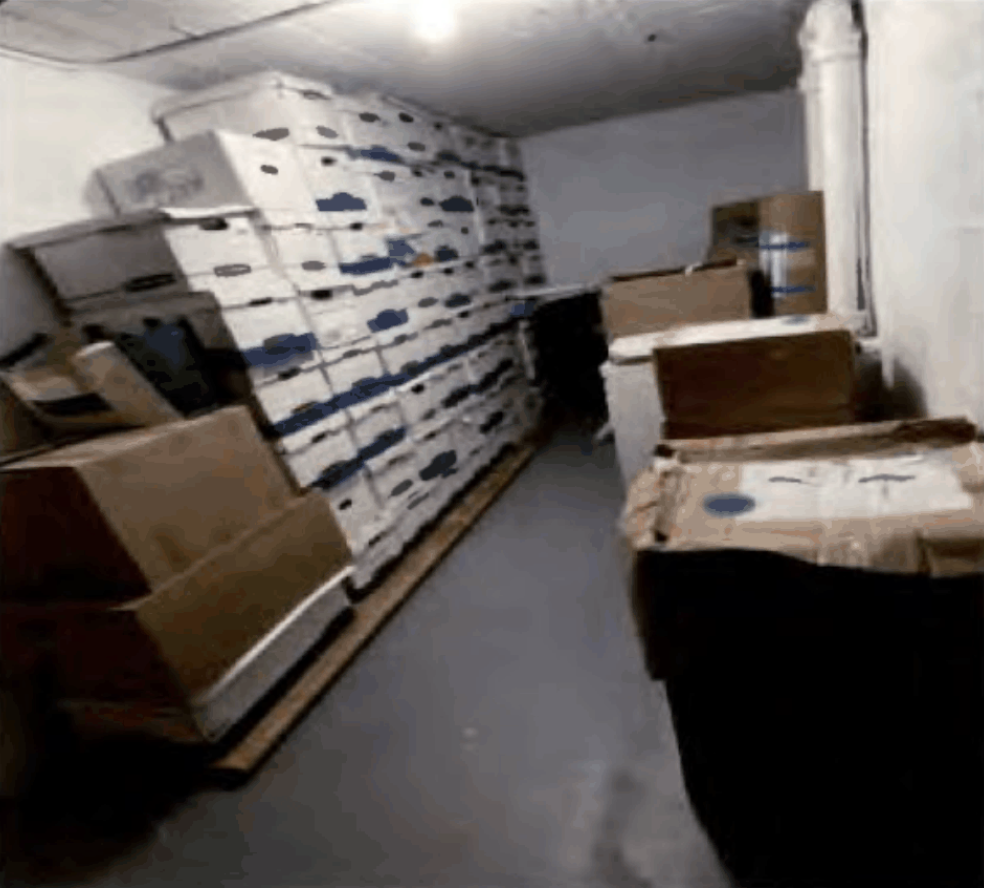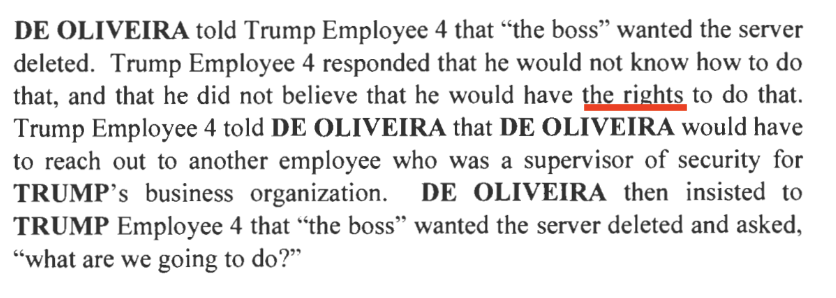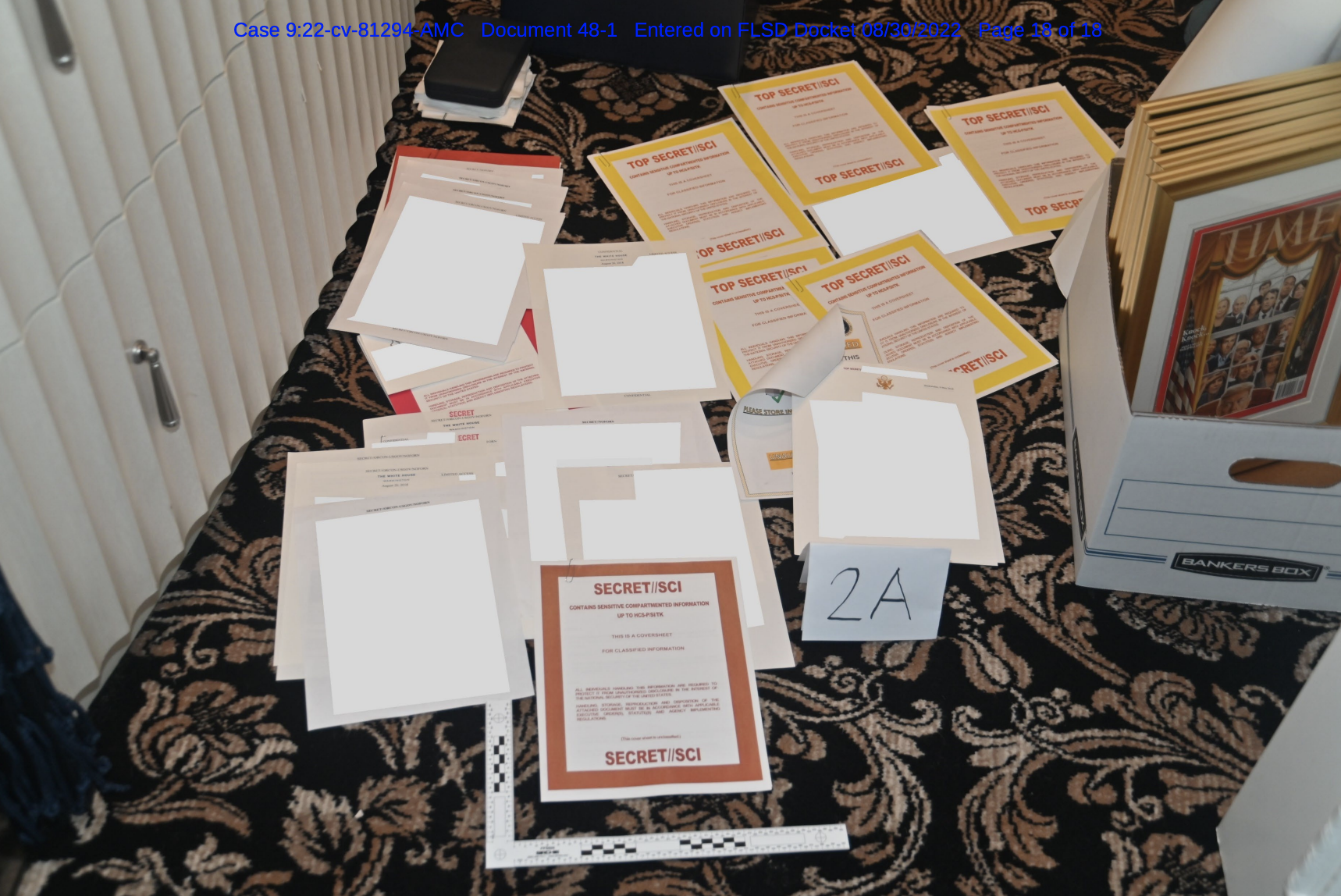“Rights” and Wrongs: Where the Stolen Documents Investigation Is Headed
I want to start this post about where the stolen documents investigation may be headed with an observation a commenter here made about this passage of the superseding indictment: the import of the word, the “rights,” coming from an IT guy who would think in terms of access privileges.
The passage comes in the midst of the Keystone Cops routine where Walt Nauta and Carlos De Oliveira try to figure out how to achieve Trump’s apparent order — probably given during a 24-minute phone call to De Oliveira on June 23 and to Nauta face-to-face at Bedminster sometime between 3:44 and 5:02PM on June 24 — to delete the surveillance server. They were stomping around, squawking about how sensitive this mission was. Nauta sent someone texts with shush emojis and De Oliveira told a valet Nauta’s visit should remain secret.
The evening of June 25 — one day after DOJ sent Trump Organization a subpoena for surveillance video — they get a flashlight and go to inspect what the surveillance cameras would pick up; by moving in front of the surveillance cameras, which we now know are motion activated, they would have triggered the cameras, thereby creating more damning surveillance footage.
Imagine the video exhibit at trial, as both Nauta and De Oliveira point a flashlight at the surveillance camera that, weeks earlier, caught both of them moving just half the boxes full of classified documents back into the storage room, two earnest faces looking straight into the camera. That footage wouldn’t be covered by the subpoena they were, at that moment, trying to defy; it would probably be covered by the next subpoena.
Two days later (there’s no indication of how Nauta spent his day on Sunday June 26), on June 27, De Oliveira walks into the IT room and asks Yuscil Taveras in front of a witness (possibly in front of another security camera) to step away so they could speak. They go to what they call an “audio closet” (which could be the decommissioned SCIF) and De Oliveira tells Taveras that “the boss” wants the surveillance server deleted.
Taveras says three things in response:
- He doesn’t know how to accomplish that
- He doesn’t have the “rights” to do that
- To accomplish the task, De Oliveira would have to reach out to one of the Matthew Calamaris
The words, “rights,” here hasn’t gotten enough attention. Taveras was saying that he did not have the computer privileges to just delete the surveillance server: one of the Matthew Calamaris in New York would have to be involved to make such a thing happen.
So after that, De Oliveira checks back in with Nauta (who has flown to Florida to accomplish this task, along with whatever he did on June 26), they stomp around some more in suspicious ways that are visible to yet more surveillance cameras, and then two hours later Trump speaks to De Oliveira for 3.5 minutes. As described, Trump calls De Oliveira, not the other way around.
Remember how I said — of the January 6 investigation — that the January 6 investigation would take more time than the Watergate investigation because, unlike Nixon, Trump is not known to have wiretapped himself?
Well, on the stolen documents investigation, he did, effectively, wiretap himself, or at least all the employees he sent to accomplish his corrupt mission. And then Trump tried, over and over, to Rosemary Woods away incriminating video, at least this first time, captured on video again.
But amid all the Keystone Cops stomping around talking about secrets while on surveillance camera and sending shush texts, what Taveras said is an important hint of where this investigation may go next (as I laid out here).
Thus far, this story — and the conspiracy as charged so far — is just a story of a failed attempt to destroy surveillance video. De Oliveira: Can you delete the server? Taveras: Nope. I don’t have the rights. Stomp stomp stomp, almost all of it on surveillance video.
The Keystone Cops caper ends with Trump calling De Oliveira at 3:55PM on June 27, with no word of what led Trump to call De Oliveira and no word of whether whatever video got deleted was deleted in Florida or New York, or somewhere else.
The superseding indictment doesn’t mention, for example, the text that Nauta sent Calamari Sr — possibly even between 1:50PM when he and De Oliveira were stomping in bushes adjacent to Mar-a-Lao and the phone call that Trump made to De Oliveira at 3:55PM.
Both Calamaris testified to the federal grand jury in Washington on Thursday, and were questioned in part on a text message that Trump’s valet, Walt Nauta, had sent them around the time that the justice department last year asked for the surveillance footage, one of the people said.
The text message is understood to involve Nauta asking Matthew Calamari Sr to call him back about the justice department’s request,
Calamari was the guy, Taveras told De Oliveira, who would have the privileges to delete surveillance footage. And sometime in that period, Nauta texted him about the surveillance request.
Thus far, this is a story and a crime about an alleged attempt to delete surveillance footage. But we can be pretty certain that surveillance video was, in fact, deleted. That’s because reporters have reported on witnesses being asked that for months. There would be no reason to obtain nine months of surveillance video — 57 terabytes of raw video, if you can believe the defense attorneys — unless there was a whole bunch more to learn from the surveillance videos.
The initial production also included some 57 terabytes of compressed raw CCTV footage (so far there is approximately nine months of CCTV footage, but the final number is not yet certain).
And there would be no reason for Trump, on August 26, to get Nauta to verify De Oliveira’s loyalty (stomp stomp stomp) before arranging to provide him a lawyer if what came next, what happened after Trump’s phone call to De Oliveira on June 27 isn’t even more damning.
Indeed, that’s why it matters that — buried in a Devlin Barrett story opining that De Oliveira’s, “alleged actions could bolster the obstruction case against the former president” because apparently Devlin hasn’t learned his lesson about presenting evidence of more serious crimes and calling it obstruction — Trump (unusually) came back to Mar-a-Lago twice between June 3 and August 8: once from July 10 to 12, and once again on July 23, and that De Oliveira told the FBI he had given away the key to storage when they showed up on August 8.
The Keystone Cop caper, in part because it is so colorful and in part because it is charged as an unsuccessful attempt, has distracted most commentators from the fact that there was a more successful attempt, and that more successful attempt didn’t hide the movement of boxes in and out of the storage closet. As I’ve noted, all the movement of boxes in May and June shows up in the search affidavit relying on what DOJ did get from Trump, save one: Nauta’s retrieval of a single box on May 22.
The superseding indictment describes that the subpoena asked for footage from “certain locations,” plural, of which the basement hallway is just one. And the most recent unsealing of the affidavit reveals that the only cameras included on the hard drive of surveillance footage turned over on July 6 were four cameras in the basement hallway. So one way or another, footage of those other locations was not turned over in response to the first subpoena.
Everyone treats this indictment as a terminal indictment — and if that’s as far as Jack Smith gets, it’s still far more damning than most everyone imagined on June 8. But multiple public references — the discussion on July 13 of continued efforts to fully exploit Nauta’s phone, the reference in DOJ’s descriptions of discovery that suggest there’s a grand jury somewhere other than DC or SDFL, and the suggestion that interviews have continued after June 23 — suggests that the current instantiation of the indictment is intended to be part of an ongoing investigation.
I noted from the first indictment that it was a “tactical nuke” designed to persuade Nauta to cooperate. Not only hasn’t the effort worked, but Stan Woodward has adopted a position on classified discovery — that Nauta, in addition to his attorneys, should get to see all the stolen classified documents — that I think makes it more likely DOJ would supersede to add a conspiracy to retain classified documents charge with him, because the elements of offense are all satisfied in the existing indictment.
Here are the obvious things that obtaining credible cooperation from Nauta would obtain:
- ¶25: Details of Trump’s intent as Nauta helped pack up documents from the White House
- ¶46: Why Trump was trying to hide when he instructed Nauta to replace the lids of the boxes
- ¶54: What he was sent for on May 22
- ¶61: What Trump instructed Nauta before he moved half the boxes back into storage for Evan Corcoran to search
- ¶73: What boxes got loaded on the plane to Mar-a-Lago on June 3
- ¶78: What Trump told him at Bedminster that led him to fly to Florida and try to bury the surveillance video (as well as what else he did on June 26, which is not accounted for)
- ¶86: What both men discussed in the bushes
- How Nauta came to text Matthew Calamari
- ¶91: How Trump came to ask Nauta to ascertain De Oliveira’s loyalty and whether Trump had similarly offered him legal representation
- What Nauta witnessed as Trump’s bodyman, especially in Bedminster
Here are the obvious things that obtaining credible cooperation from De Oliveira would obtain:
- ¶76: Details of the 24-minute call he had with Trump, while Trump was at Bedminster
- ¶86: What both men discussed in the bushes
- ¶87: What Trump said on the phone call and whether De Oliveira had a role in the successful deletion of video, and how he knew what to delete
- ¶91: What the terms of his representation are and whether it led him to lie (a question, other reports have made clear, many witnesses have been asked)
- Why Trump returned to Mar-a-Lago twice before the August 8 search
- To whom he gave the key to the storage room and on whose orders
- Whether the October flood of the server room was an(other) attempt to destroy surveillance footage and if so, whether he was instructed to do so
De Oliveira might be a key witness to lead Nauta to reconsider his decision to protect Trump.
More importantly, one or both might be irreplaceable witnesses to answer a number of closely intertwined questions:
- How is Trump is using lawyers to command loyalty and does it create conflict or obstruction issues
- What surveillance footage has Trump prioritized for destruction and why
- Why did Trump steal the documents, how has he used them, and where did the ones that went to Bedminster disappear to
- What role does Trump’s PAC have in exploitation of the documents
- What role does Trump Organization have in exploitation of the documents
- Who else has had ready access to these documents
All this superseding indictment shows is that Trump had something to hide that goes beyond his desire to hoard the classified documents. Jack Smith may require the cooperation of one or both of these men to fully understand what Trump is really hiding.
This fairly remarkable post from the WSJ opinion page demonstrates the stakes of trying to answer it. It’s a pitch to elect someone other than Trump in the GOP primary, and premised on an utterly bullshit claim that Biden has politicized justice. But it gets a good distance of the way to an important discovery: even the Keystone Cops attempt already included in the indictment totally debunks Trump’s public defense, because if he believed in June 2022 that he had the right to keep these, he wouldn’t have dug himself — and thus far two staffers — deeper into a legal hole.
If Mr. Trump sought to destroy evidence, it undercuts his defense on the document charges. He contends that the Presidential Records Act gives him the right to retain documents from his time in office. But if Mr. Trump believed that, he would have played it straight. If the indictment is right that he hid the files from his own lawyers and tried to wipe the security video to stop anybody from finding out, then he didn’t buy his own defense.
From a Murdoch rag, this is a really important insight. But then WSJ predictably refuses to take the next logical step: That Trump’s obstruction makes it clear he didn’t just do this out of pigheadedness.
Prudential questions about the wisdom of this prosecution remain. Mr. Trump appears to have kept the files out of pigheadedness, not because he wanted to do something nefarious like sell them to an adversary. The FBI raided Mar-a-Lago to recover the documents.
The episode reflects poorly on Mr. Trump. But is this conduct that truly gives President Biden no choice except to ask a jury to jail his leading political opponent in next year’s election? At least Watergate involved a burglary.
We can’t even rule out a burglary, if Trump learned that he compromised these documents by storing them in his beach resort! Especially since De Oliveira claimed he had given the key away to others. We can’t rule out selling them to an adversary! We sure as hell can’t rule out trying to exploit them for the success of his PAC.
The indictment and an attempt to try this before the general election is an important goal, though potentially unrealistic given the CIPA challenges.
But it really is important to learn what Trump did do with these documents, who got the key, where they disappeared to.
This indictment doesn’t answer the question of why Trump stole these documents or what he did with them. All the superseding indictment did is make the question more urgent.
Update: Fixed Trump’s location from whence he called De Oliveira — the first call would have been Bedminster.



